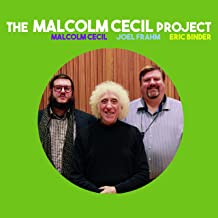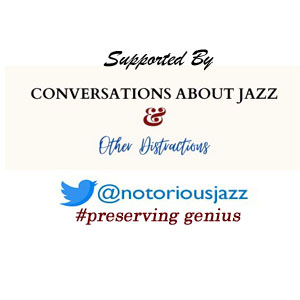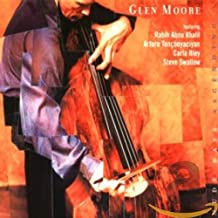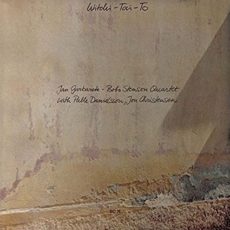
Daily Dose Of Jazz…
Christiaan Herbert “Chris” Hinze was born June 30, 1938 in Hilversum, Netherlands. He initially performed publicly as a pianist until the mid-Sixtiess, when he began studying flute at the Royal Conservatory of The Hague and then came to America and Berklee College of Music.
As a pianist, he played with Boy Edgar until 1966, but by 1967 was playing flute professionally with the bassist Dick van der Capellen. His first releases as a leader were issued in 1969, and in 1970, and was awarded the Best Soloist prize at the Montreux Jazz Festival.
The 1970s saw him forming his own ensemble, the Chris Hinze Combination, which included Gerry Brown and John Lee, which produced some success with arrangements of Baroque music in a jazz setting. He founded the record label Keytone Records in the mid-1970s.
In the 1980s, Hinze played for several years in a duo with Sigi Schwab and continued touring with a new version of his Combination. He began studying the music of Tibet and South Asia in the middle of the decade, forming a world music ensemble which shifted toward more new age and electronic music styles rather than jazz.
Flautist Chris Hinze continues to compose and perform.
More Posts: bandleader,flute,history,instrumental,jazz,music

Daily Dose Of jazz…
David Darling was born March 4, 1941 in Elkhart, Indiana. Interested in music from an early age, he began piano when he was four, cello at ten, and string bass in high school. He studied classical cello at Indiana State University and after graduating remained there another four years as a teacher.
Working as a studio musician in Nashville, Tennessee he was a member of the Paul Winter Consort until 1978. During the following year Gus was part of the chamber jazz group Gallery with Ralph Towner and released his first solo album, Journal October. His performance and composition draw on a wide range of styles, including classical, jazz, Brazilian, African, and Indian music.
He has written and performed music for more than a dozen major motion pictures from 1988 to 2004 and recorded a collaboration with the Wulu Bunun, a group of Taiwanese aborigines. In 2007 he recorded The Darling Conversations, with Julie Weber discussing his music philosophy. He followed this in 2009 with the release of the Grammy-winning Prayer for Compassion.
In the Eighties he began his life as an educator of young children by joining Young Audiences, founded Music for People, which seeks to encourage self-expression through musical improvisation. He became part of a collaboration of music teachers and performers offering a training program in holistic and intercultural approaches to healing with sound and music at the New York Open Center Sound and Music School.
Cellist and composer David Darling died in his sleep on January 8, 2021.
More Posts: bandleader,cello,composer,history,instrumental,jazz,music

Daily Dose Of Jazz…
Malcolm Cecil was born on January 9, 1937 in London, England. By the time he came of age he was a founding member of the UK’s leading jazz quintet of the late 1950s, The Jazz Couriers, before going on to join a number of British jazz combos led by Dick Morrissey, Tony Crombie and Ronnie Scott into the early 1960s.
Malcolm later joined Cyril Davies and Alexis Korner to form the original line-up of Blues Incorporated. With Robert Margouleff he formed the duo TONTO’s Expanding Head Band, a project based on a unique combination of synthesizers. This led to them collaborating on and co-producing several of Stevie Wonder’s Grammy-winning albums Talking Book, Music of My Mind, Innervisions and Fulfillingness’ First Finale of the early 1970s. They are also credited as engineers for the Stevie Wonder produced 1974 album Perfect Angel by Minnie Riperton.
Their unique sound made them highly sought-after and they went on to venture in not only jazz, but rock and r&b to collaborate with, amongst others, Quincy Jones, Gil Scott-Heron, Weather Report, Bobby Womack, The Isley Brothers, Billy Preston, Stephen Stills, The Doobie Brothers, Dave Mason, Little Feat, Joan Baez and Steve Hillage. Bassist, engineer and record producer Malcolm Cecil continues to perform and produce.

More Posts: bandleader,bass,history,instrumental,jazz,music,record producer

Daily Dose Of Jazz…
Glen Moore, born October 28, 1941 in Portland, Oregon started his performing career began at age 14 with the Young Oregonians in Portland. It was at this time where he met and played with Native American saxophonist, Jim Pepper.
Graduating with a degree in History and Literature from the University of Oregon, his formal bass instruction started after college with Jerome Magil in his hometown, James Harnett in Seattle, Washington, Gary Karr in New York City, Plough Christenson in Copenhagen, Denmark, Ludwig Streicher in Vienna, Austria, and Francois Rabbath in Hawaii.
Moore is a founding member of Oregon but worked also regularly with Rabih Abou-Khalil, Vasant Rai, Nancy King, and Larry Kar. For the past 30 years, has played a Klotz bass fiddle crafted in Tyrol circa 1715 on which he has made extensive use of a unique tuning with both a low and high C string. He has recorded ten albums as a leader, twenty~eight with Oregon, and twenty as a sideman. Double bassist Glen Moore, who also plays piano, flute, and violin continues to perform and record.
More Posts: bandleader,bass,flute,history,instrumental,jazz,music,piano,violin

Daily Dose Of Jazz…
Jan Garbarek was born March 4, 1947 in Mysen, Norway and grew up in Oslo, the only child of a former Polish prisoner of war and a Norwegian farmer’s daughter. He began his recording career in the late 1960s featured on recordings by jazz composer George Russell. Initially influenced by Albert Ayler and Peter Brötzmann, by 1973 he left avant-garde jazz, and gained wider recognition working with pianist Keith Jarrett’s European Quartet, recording on six Jarrett albums between 1974 and 1979.
As a composer, he draws from Scandinavian folk melodies and his Ayler influence, as well as being a pioneer of ambient jazz composition, exhibited on his Dis album with guitarist Ralph Towner. Jan has ventured into new-age music, set a collection of Olav H. Hauge poems to music, solo saxophone complemented a full mixed choir and incorporated synthesizers and elements of world music.
Garbarek has recorded more than two-dozen albums as a leader and another 45 to date as a sideman with Karin Krog, Terje Rypdal, George Russell, Art Lande, Ralph Towner, Bill Connors, David Darling, Keith Jarrett, Egberto Gismonti, Charlie Haden, Zakir Hussain, Trilok Gurtu, Manu Katché, Eleni Karaindrou, Kim Kashkashian, Marilyn Mazur, Gary Peacock, L. Shankar, Paul Giger, Giya Kancheli, Miroslav Vitous, Eberhard Weber and Kenny Wheeler
His album Officium, a collaboration with early music vocal performers the Hilliard Ensemble, became one of ECM’s biggest-selling albums of all time. Saxophonist Jan Garbarek, who received a Grammy nomination in 2005 for his album In Praise of Dreams, He is also active in classical and world music and continues to perform, record and tour.
#preserving genius
More Posts: saxophone




